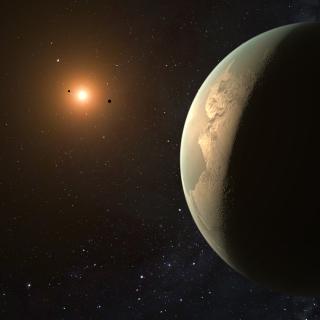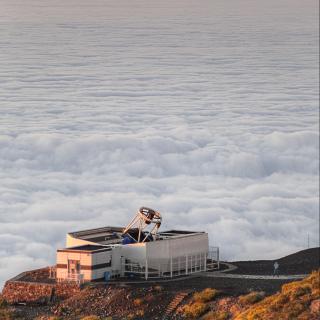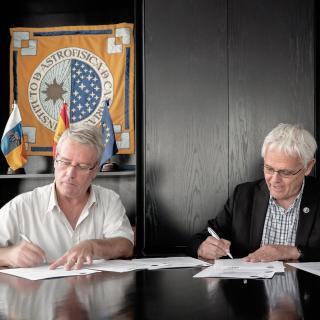It may interest you
-
 An international team, led by a student from Instituto de Astrofísica de Canarias (IAC), has detected a super-Earth orbiting in the habitable zone of GJ 3998, a nearby red dwarf located 59 ly away. The new planet, named GJ 3998 d, is the third planet found in the system. ‘GJ 3998 d is a welcome addition to the planetary census of our cosmic neighbourhood’, states Atanas Stefanov, a "La Caixa" funded PhD student at the IAC and the University of La Laguna (ULL) and the study’s lead author, published in Astronomy & Astrophysics . 'This super-Earth appears to be in the habitable zone of one ofAdvertised on
An international team, led by a student from Instituto de Astrofísica de Canarias (IAC), has detected a super-Earth orbiting in the habitable zone of GJ 3998, a nearby red dwarf located 59 ly away. The new planet, named GJ 3998 d, is the third planet found in the system. ‘GJ 3998 d is a welcome addition to the planetary census of our cosmic neighbourhood’, states Atanas Stefanov, a "La Caixa" funded PhD student at the IAC and the University of La Laguna (ULL) and the study’s lead author, published in Astronomy & Astrophysics . 'This super-Earth appears to be in the habitable zone of one ofAdvertised on -
 The IAC's Educational Project with Robotic Telescopes (PETeR) offers a new edition of its online teacher training entitled ‘ Investigate the Universe with Robotic Telescopes’. This activity, organised in collaboration with the STEAM area of the regional Ministry of Education of the Canary Islands Government, aims to provide knowledge and tools to incorporate astronomy in the classroom through the use of professional robotic telescopes, the analysis of scientific data and active learning methodologies. PETeR is an educational project that gives schools free access to professional telescopesAdvertised on
The IAC's Educational Project with Robotic Telescopes (PETeR) offers a new edition of its online teacher training entitled ‘ Investigate the Universe with Robotic Telescopes’. This activity, organised in collaboration with the STEAM area of the regional Ministry of Education of the Canary Islands Government, aims to provide knowledge and tools to incorporate astronomy in the classroom through the use of professional robotic telescopes, the analysis of scientific data and active learning methodologies. PETeR is an educational project that gives schools free access to professional telescopesAdvertised on -
 The Instituto de Astrofísica de Canarias (IAC) and the European Solar Telescope Fundación Canaria (EST-FC) have signed thos Friday October 4th the agreement to promote the construction of the European Solar Telescope (EST). This ambitious project aims to consolidate and expand the Canary Islands' position as a world leader in solar physics research. The agreement was ratified by the director of the IAC, Valentín Martínez Pillet, and the representive of EST-FC, Manuel Collados. The signing act was attended by other members involved in the project: Héctor Socas-Navarro, Alejandra Martín; andAdvertised on
The Instituto de Astrofísica de Canarias (IAC) and the European Solar Telescope Fundación Canaria (EST-FC) have signed thos Friday October 4th the agreement to promote the construction of the European Solar Telescope (EST). This ambitious project aims to consolidate and expand the Canary Islands' position as a world leader in solar physics research. The agreement was ratified by the director of the IAC, Valentín Martínez Pillet, and the representive of EST-FC, Manuel Collados. The signing act was attended by other members involved in the project: Héctor Socas-Navarro, Alejandra Martín; andAdvertised on